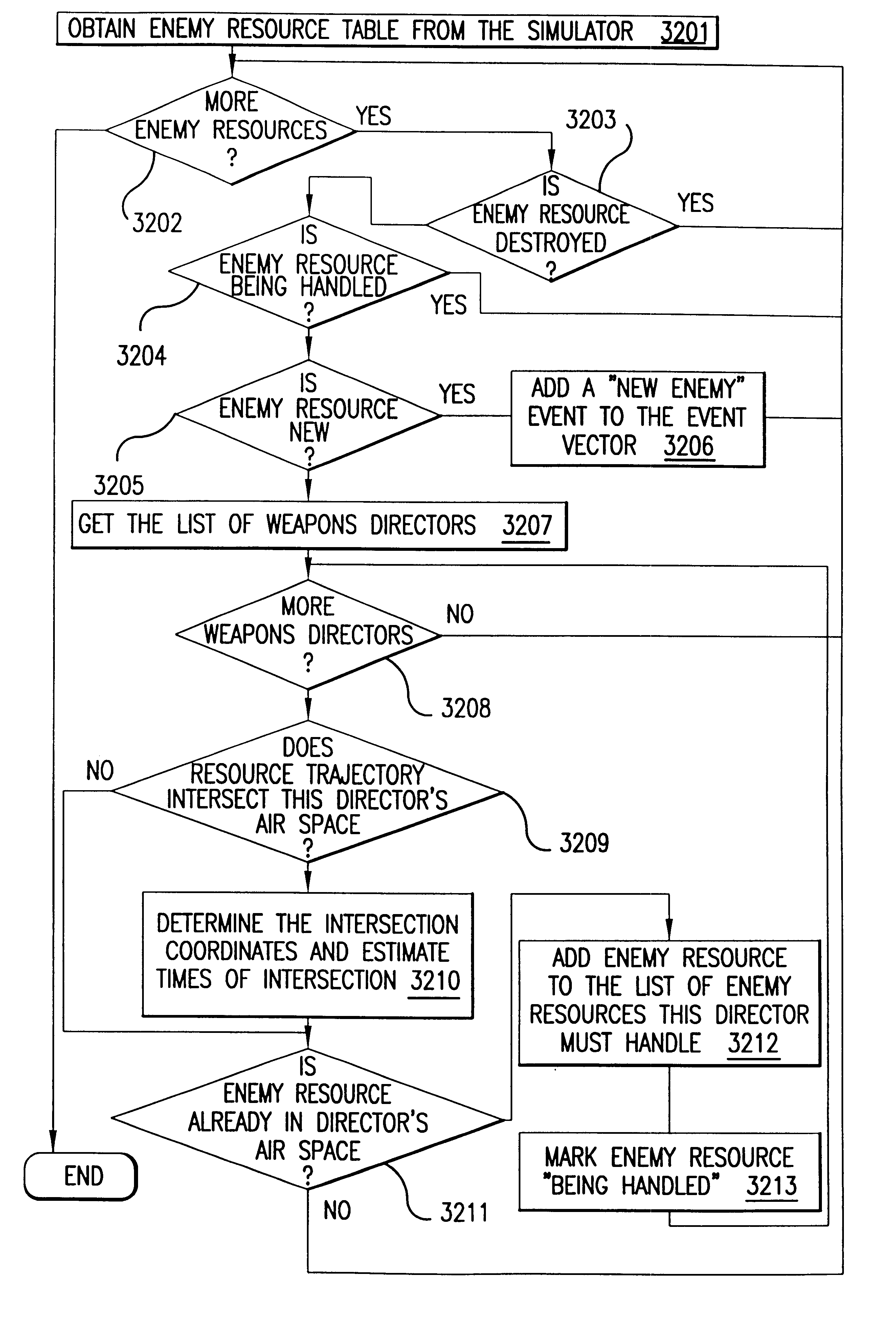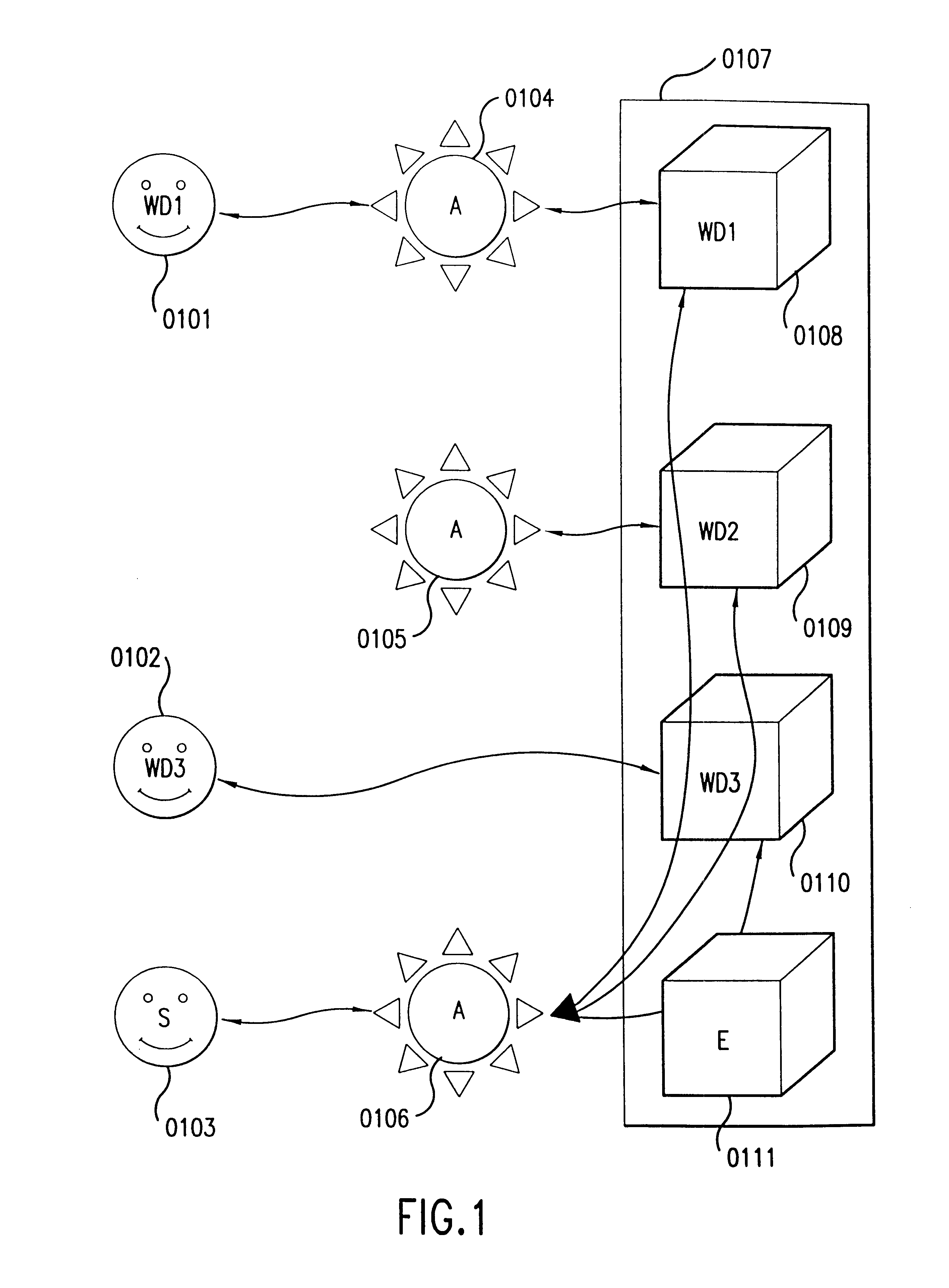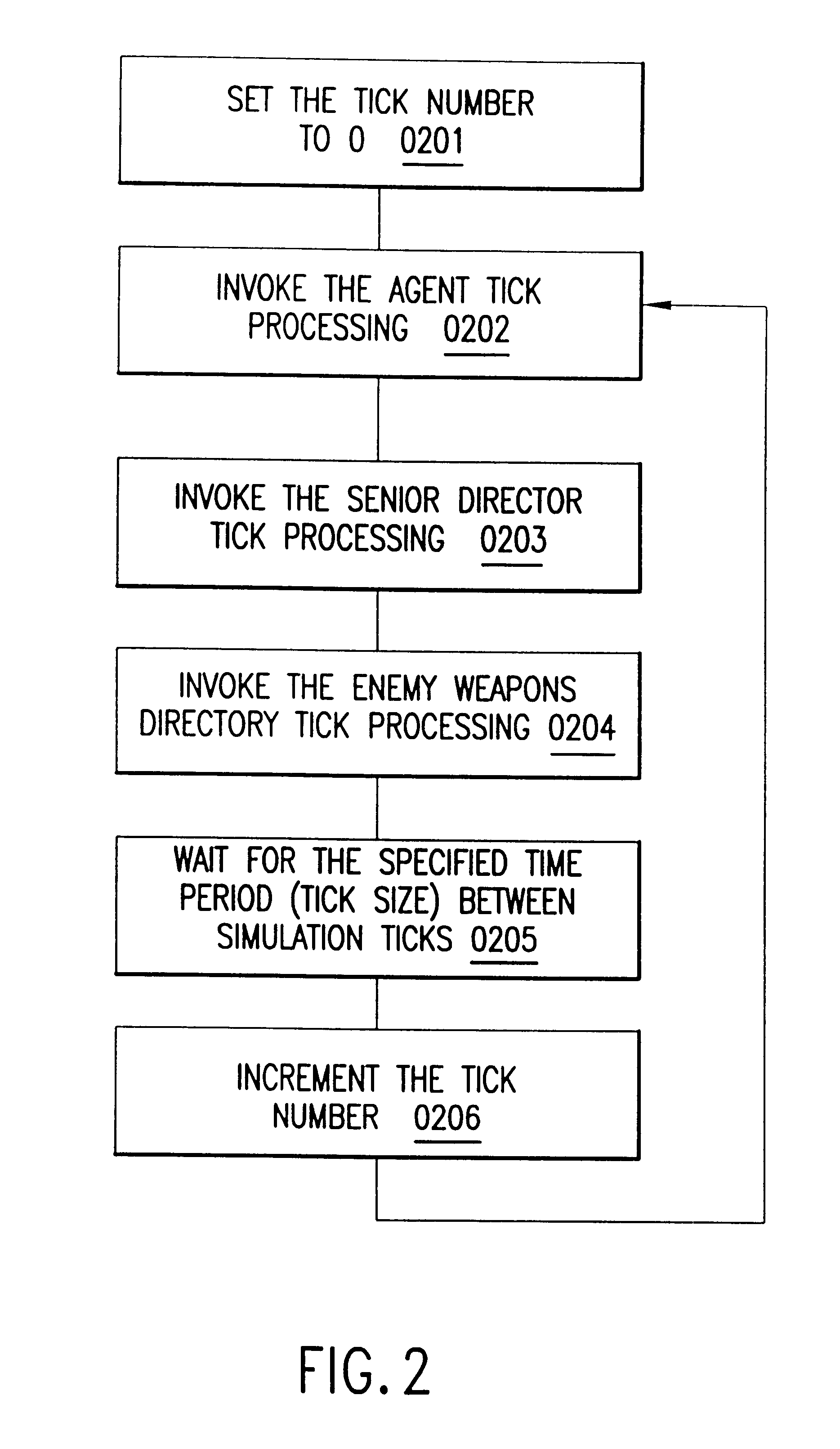Method and system for intelligent agent decision making for tactical aerial warfare
a technology of intelligent agents and decision-making systems, applied in the field of intelligent agent decision-making systems for tactical aerial warfare, can solve the problems of no intelligent agent today takes into consideration such factors, no existing intelligent agent accepts real-time corrections to ", and no existing intelligent agent today takes into account such factors
- Summary
- Abstract
- Description
- Claims
- Application Information
AI Technical Summary
Benefits of technology
Problems solved by technology
Method used
Image
Examples
embodiment enhancement 1--
ENEMY RESOURCE RECOGNITION
In an enhanced embodiment, the agent is not provided any information about the type of enemy resources that are present or suddenly appear in the simulation. In a real-life military situation, when a resource is detected, it may not always be known what this resource's allegiance is--"ours", "enemy", "ally", "neutral", etc., nor what type of resources this is--fighter, bomber, civilian aircraft, etc. Actions of a resource may need to be observed over a particular time period, and certain conclusions may be drawn heuristically, based on these actions. Additionally, an attempt to contact an unknown resource via radio or optical signals, or even a fly-by of an unknown resource by our aircraft may be recommended by the agent or ordered by a weapons director to visually identify an unknown resource. If the agent is connected to the radar feed, the agent may also examine the radar screen patterns of unknown resources and attempt to combine the information it gain...
embodiment enhancement 2 -
EMBODIMENT ENHANCEMENT 2--USER FEEDBACK OR AUGMENTATION OF INFORMATION AND ITS PROPAGATION
A weapons director may also obtain information from sources not monitored by the agent, e.g., from conversations with other weapons directors or the senior director, from intelligence sources, or from radio transmissions. In this case, it would be advantageous for a weapons director to provide additional information to the agent so that the agent could incorporate this additional information in its decision making. For this purpose, user feedback / correction is permitted by the user interface, and corrected information is conveyed to the agent.
While a single left mouse button click on a resource symbol causes a detailed resource information displayed to be presented to a user, a double left mouse button click on a resource symbol causes an edit session to be opened, permitting the user to edit specific information about the resource. FIG. 50 shows such an edit session for our resource 2F16A 5001...
embodiment enhancement 3--
PILOT FATIGUE MEASUREMENTS
Pilots' degree of stress and resulting pilot fatigue are important when making decisions about plane assignments for various missions. There exists an empirically established degree of pilot fatigue, which, when reached, causes the airplane pilot to be considered incapable of safe operation of an airplane. However, long before the critical fatigue level is reached, the ability of a pilot to safely operate an airplane in critical and demanding circumstances may be impaired. Pilot fatigue is an important factor contributing to loss of airplanes in the combat environment, and thus becomes an important consideration for tactical decision making when allocating resources for defensive, offensive, or reconnaissance purposes.
For the purpose of measuring pilot fatigue, each Plane object is enhanced with an additional floating-point field--"fatigue". This field is set to 0 every time a plane takes off from a base, under an assumption that the pilot is completely res...
PUM
 Login to View More
Login to View More Abstract
Description
Claims
Application Information
 Login to View More
Login to View More - R&D
- Intellectual Property
- Life Sciences
- Materials
- Tech Scout
- Unparalleled Data Quality
- Higher Quality Content
- 60% Fewer Hallucinations
Browse by: Latest US Patents, China's latest patents, Technical Efficacy Thesaurus, Application Domain, Technology Topic, Popular Technical Reports.
© 2025 PatSnap. All rights reserved.Legal|Privacy policy|Modern Slavery Act Transparency Statement|Sitemap|About US| Contact US: help@patsnap.com



